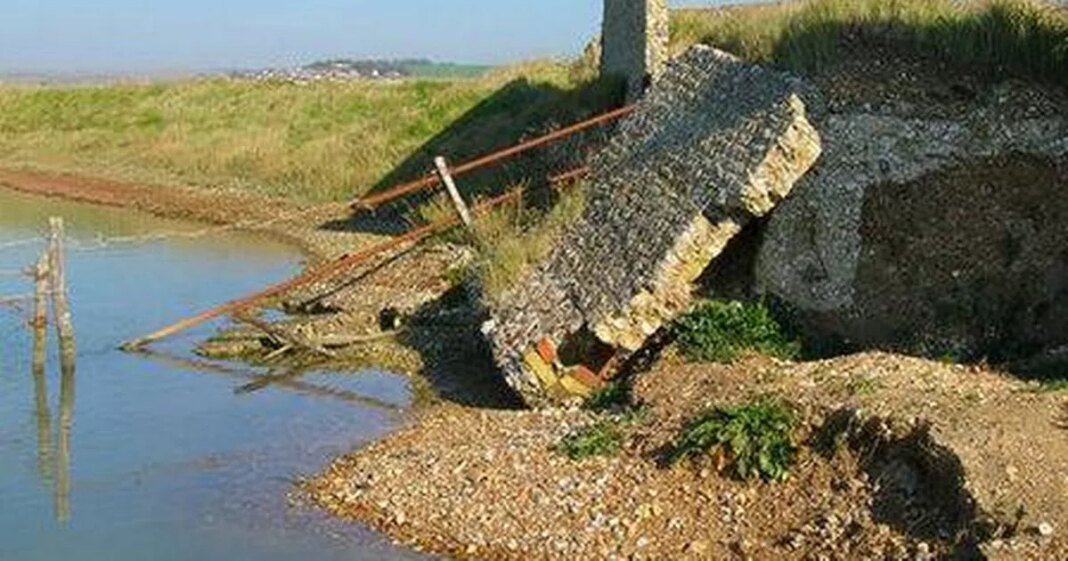A coastal town that used to be bustling with activity has now become a mere shadow of its former self as its residents were compelled to vacate the area.
Presently, Tide Mills in Sussex lies in ruins, barely recognizable as a once-thriving community. Just under a century ago, this small section of the southern coast was teeming with industry and village livelihood.
The community, centered around a tidal mill established in 1761, started off modestly. Local men loaded barges with grain while women mended flour sacks in a few cottages surrounding the mill.
Tide Mills faced a tragic event in 1795 when hungry English soldiers during the Napoleonic Wars stole 200 sacks of flour from the town, leading to their arrest and subsequent execution.
Around ten years later, the village expanded significantly when industrialist William Catt acquired the mill. Catt, intrigued by exotic fruits, constructed a large greenhouse where he cultivated figs and pineapples.
Despite the fruit-growing venture, Catt governed the village with strict rules, enforcing a curfew and penalizing latecomers. The decline of Tide Mills began with the extension of the railway to Seaford in 1864, making it more cost-effective for farmers to transport their grain to London for milling.
Subsequent events, including a damaging storm in the late 1800s and the closure of the mill in 1883, marked the gradual decline of Tide Mills. Community essentials like schools and workshops started disappearing, but the residents persevered.
In the early 1900s, Tide Mills saw a brief resurgence with the construction of a radio mast and a seaplane station during World War I, attracting military activity to the area.
However, in 1930, a Housing Act enabled local authorities to condemn the substandard housing in Tide Mills. A lack of maintenance and job opportunities led to the village’s deterioration, prompting an eviction order in 1937 due to unsanitary living conditions.
The villagers were given nine months to vacate, with final evictions occurring in 1940. Today, only remnants of the village exist among the ruins, with Station House being the most recognizable structure.
The remnants of Tide Mills are now open for exploration, attracting visitors for walking and cycling activities in the area.

